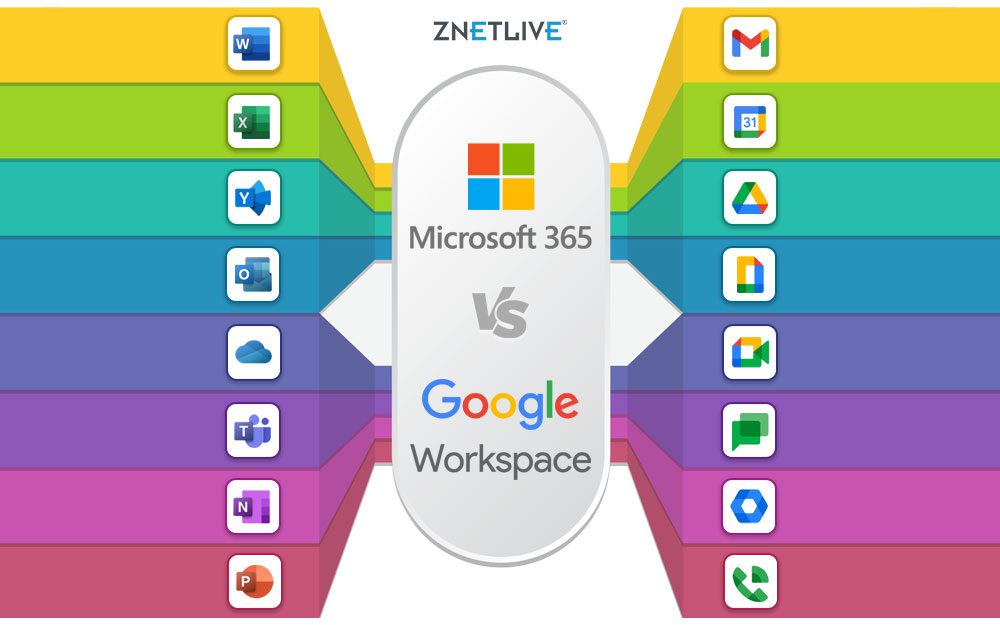Microsoft Office and Google Workspace are productivity suites that offer a range of applications to simplify tasks, increase productivity, and streamline workflows. While Microsoft Office is the go-to productivity suite for most businesses and educational institutions, Google Workspace boasts superior accessibility and collaboration tools. Google’s cloud-based platform makes it easy to access from any device with an internet connection, and real-time collaboration features are more seamless than those offered by Microsoft Office. Pricing also differs between the two, with Microsoft Office being more expensive but offering a wider range of features, while Google Workspace is more affordable but with fewer features. Ultimately, the choice between the two depends on individual needs and preferences.
Microsoft Office vs. Google Workspace: A Comparison of Productivity Suites
Productivity suites are essential tools in the modern-day business or educational setting. They offer a suite of applications that simplify tasks, increase productivity, and streamline workflows. However, with the variety of productivity suites available, it can be challenging to choose the best one for your needs.
In this article, we’ll compare two renowned productivity suites: Microsoft Office and Google Workspace. We’ll compare them in terms of features, accessibility, collaboration, and pricing.
Features
Microsoft Office is the go-to productivity suite for most businesses and educational institutions. It offers a range of applications that are essential for productivity, including Word, Excel, PowerPoint, Outlook, and OneNote. Microsoft Office has an intuitive, user-friendly interface, and offers feature-rich applications with a vast range of capabilities.
On the other hand, Google Workspace offers similar applications, including Google Docs, Sheets, Slides, Gmail, and Google Drive. However, their applications are more lightweight, with fewer features than those offered by Microsoft. While this may seem like a disadvantage, Google Workspace makes up for this through its ease of use and seamless integration with Google’s other services.
Accessibility
Accessibility is another essential factor in productivity suites. Microsoft Office offers a desktop application that requires installation on individual machines for use. Alternatively, users can access Office online and collaborate on documents with other users in real-time. It’s also possible to access Office applications on mobile devices through the Office mobile app.
Google Workspace is cloud-based, which means that there’s no need to install applications on individual machines. Instead, users can access Google Workspace from any device with an internet connection. The accessibility of Google Workspace makes it an ideal choice for remote teams, freelancers, or businesses with multiple offices.
Collaboration
Collaboration is one of the key features of productivity suites, and both Microsoft Office and Google Workspace offer excellent collaboration tools. Microsoft Office allows multiple users to work on a document simultaneously, with real-time updates and co-authoring capabilities. It’s also possible to share documents through the OneDrive cloud storage platform, and to assign tasks to other users through Microsoft Teams.
Google Workspace has an edge over Microsoft Office when it comes to collaboration. Google Workspace allows for real-time collaboration between multiple users, with changes synchronized instantly. Additionally, Google has an excellent commenting system that allows users to provide feedback without altering the document itself. Lastly, Google Workspace’s integration with Google Meet makes it easy to hold video meetings and share documents during the call.
Pricing
When it comes to pricing, there are differences between the two productivity suites. Microsoft Office operates on a subscription-based model, where users pay a monthly or annual fee to access the suite’s applications. There are different pricing tiers depending on the user’s needs, but it can be an expensive option for some users.
Google Workspace also operates on a subscription-based model, but with a much lower price point than Microsoft Office. Google Workspace offers plans for individuals, small teams, and larger organizations, with varying levels of features and storage capacities. Google Workspace is an ideal choice for those who don’t need the full range of features offered by Microsoft Office.
Conclusion
In conclusion, both Microsoft Office and Google Workspace have their advantages and disadvantages. While Microsoft Office offers a wide range of features, Google Workspace is more accessible and boasts superior collaboration tools. Ultimately, the choice between the two depends on individual needs and preferences, as well as the specific requirements of the user or organization.
